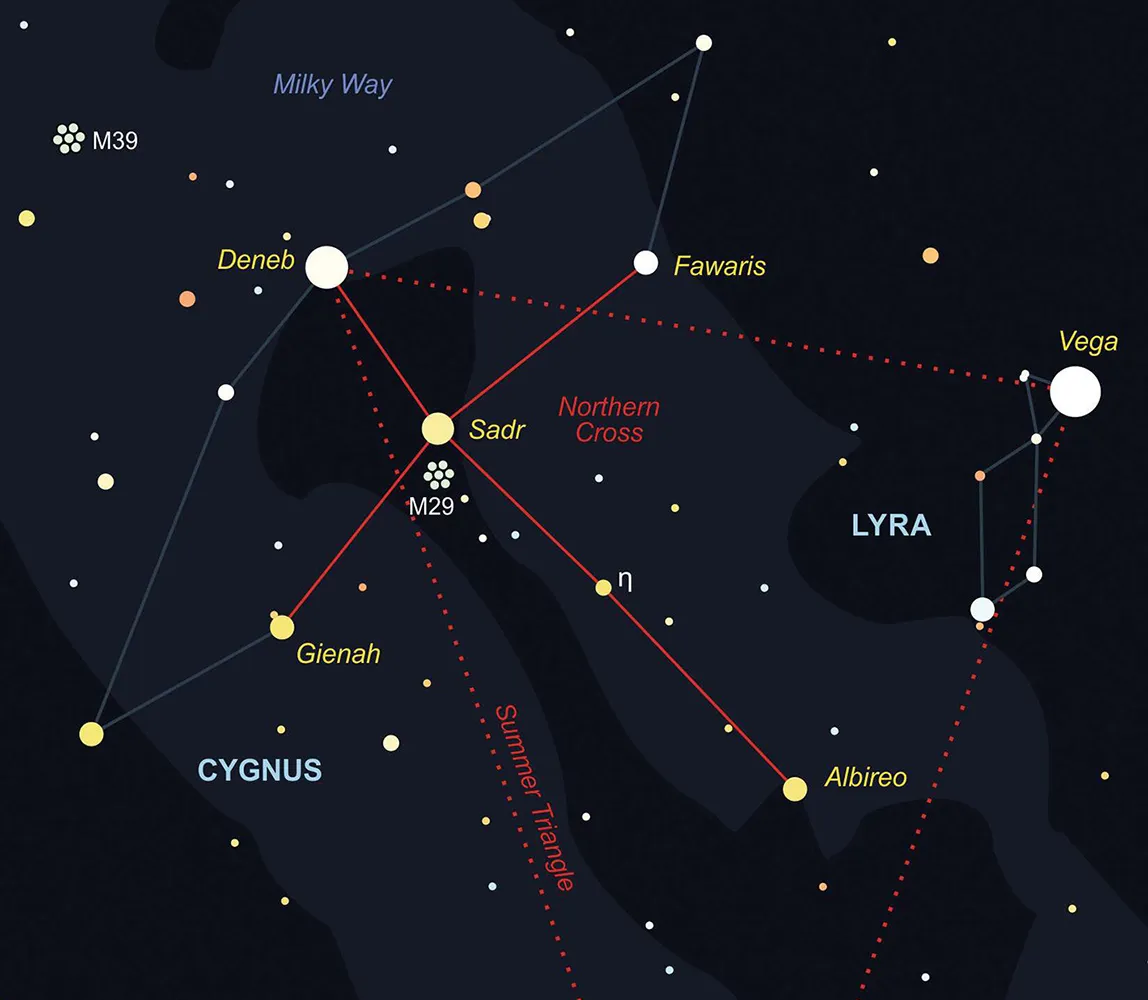September ushers in the autumn equinox mid-month, heralding the onset of rapidly darkening skies. It provides optimum viewing of the constellation Cygnus, which from dusk appears directly overhead in the night sky.
Cygnus is the 16th largest constellation and is easily recognisable for its distinctive cross pattern that resembles a swan in diving flight.
It sits in the plane of the Milky Way and is rich with sky objects. These include two open star clusters, M29 and M39, which areboth easily seen with a decent pair of binoculars.
Even without optical equipment, Cygnus offers some bright stars that are visible to the naked eye. The brightest is Deneb, a blue-white supergiant located around 1,400 light-years away. You may already be familiar with Deneb as it also forms part of another asterism, the Summer Triangle.

At dusk, Cygnus is directly overhead in the southeastern sky and gradually moves towards the west as the night progresses. You can use Vega, one of the brightest stars in the summer sky,to helpyoufind the constellation. Draw an imaginary diagonal line up from Vega to arrive at Deneb, the ‘tail’ of the swan.
Move along from Deneb and you’ll spot the second brightest star in the constellation, Sadr, which is the ‘chest’ of the swan. Keep following the line down, you’ll reach Eta Cygni in the ‘neck’ and finally Albireo, the ‘beak’ of the swan.
To the naked eye, Albireo looks like a single star,but binoculars will reveal it as two.
Going back to Sadr, you can easily trace the wings on either side, completing the main stars that make the well-known Northern Cross asterism.
Read more:
- How can I see the Pleiades star cluster?
- How can I see Betelgeuse?
- How can I see the Andromeda Galaxy?
- How can I spot the International Space Station?
Looking for stargazing tips? Checkout our complete astronomy for beginners UK guide.